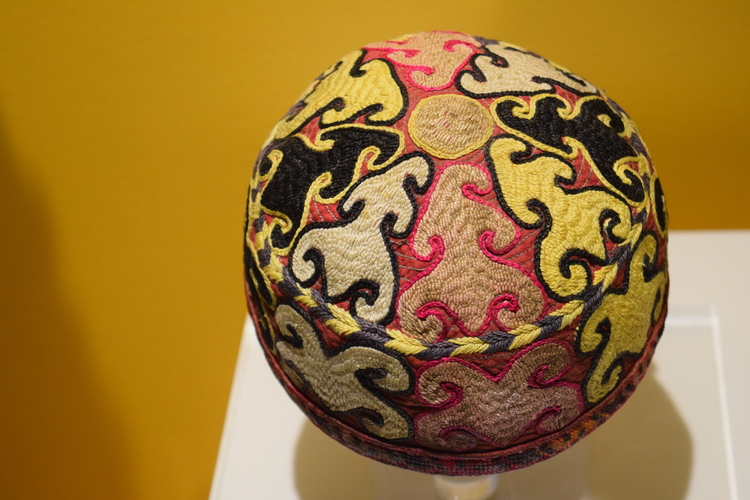
Lakai Skullcap
Uzbekistan
Late 20th century
Cotton, silk embroidery
Skullcaps come in an infinite variety of designs, from simple white crocheted caps to ornately embroidered and beaded ones. They reflect the wearer’s country, culture, and heritage. Both Muslim and Jewish men (the Jewish skullcap is called a kippah) cover their heads when in a place of worship and during prayer, announcing their faith and showing respect for God.
The curved ram’s horn motif of this skullcap is a reminder of the importance of sheep and goats in the Lakai tribe’s traditionally semi-nomadic society. Men, women, and children wear skullcaps with this ancient design, which symbolizes their people’s spiritual connection with animals and nature.
Headwear: Spiritual Beliefs
-
Tawa Deer Dance Headdress
-
Luba Diviner’s Headdress (Nkaka)
-
Hausa Hat (Fulan)
-
“House of the Head” Yoruban Headdress (Ile Ori)
-
Monk/Magician Black Hat (Shanag)
-
Shinto Priest’s Hat (Kanmuri)
-
Five Buddha Crown (Rig Nga)
-
Woman’s Skullcap (Taqiyah)
-
Thunderbolt Crown
-
Lama’s Tantric Crown
-
Bishop’s Miter
-
Sufi Hat
-
Whirling Dervish/Mevlevi Sikke
-
Tubeteika Skullcap (Doppilar)
-
Lakai Skullcap
-
Alsacienne Bow (La Coiffe or Noeud)
-
Embroidered Hood (Gargush)
-
Huichol Shaman’s Hat (Rupurero)